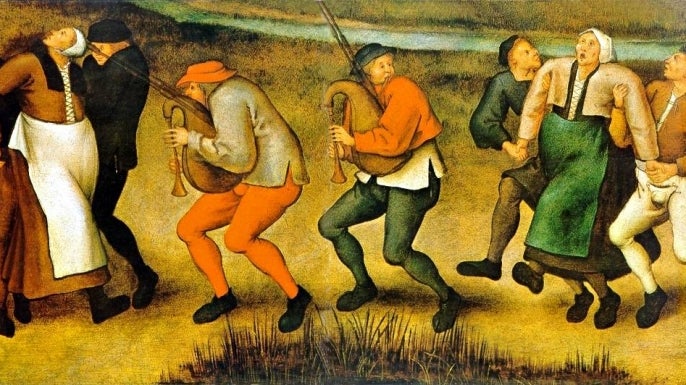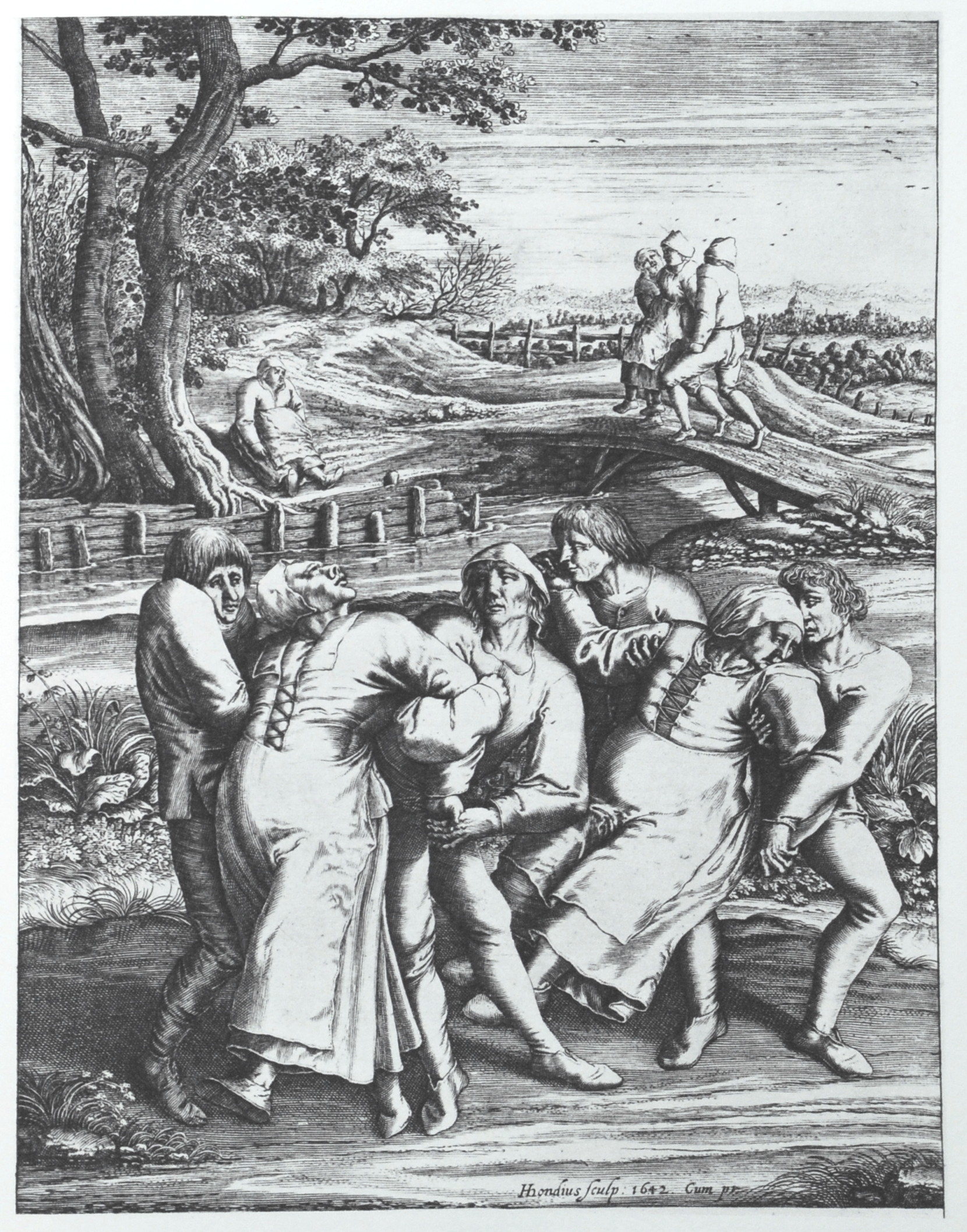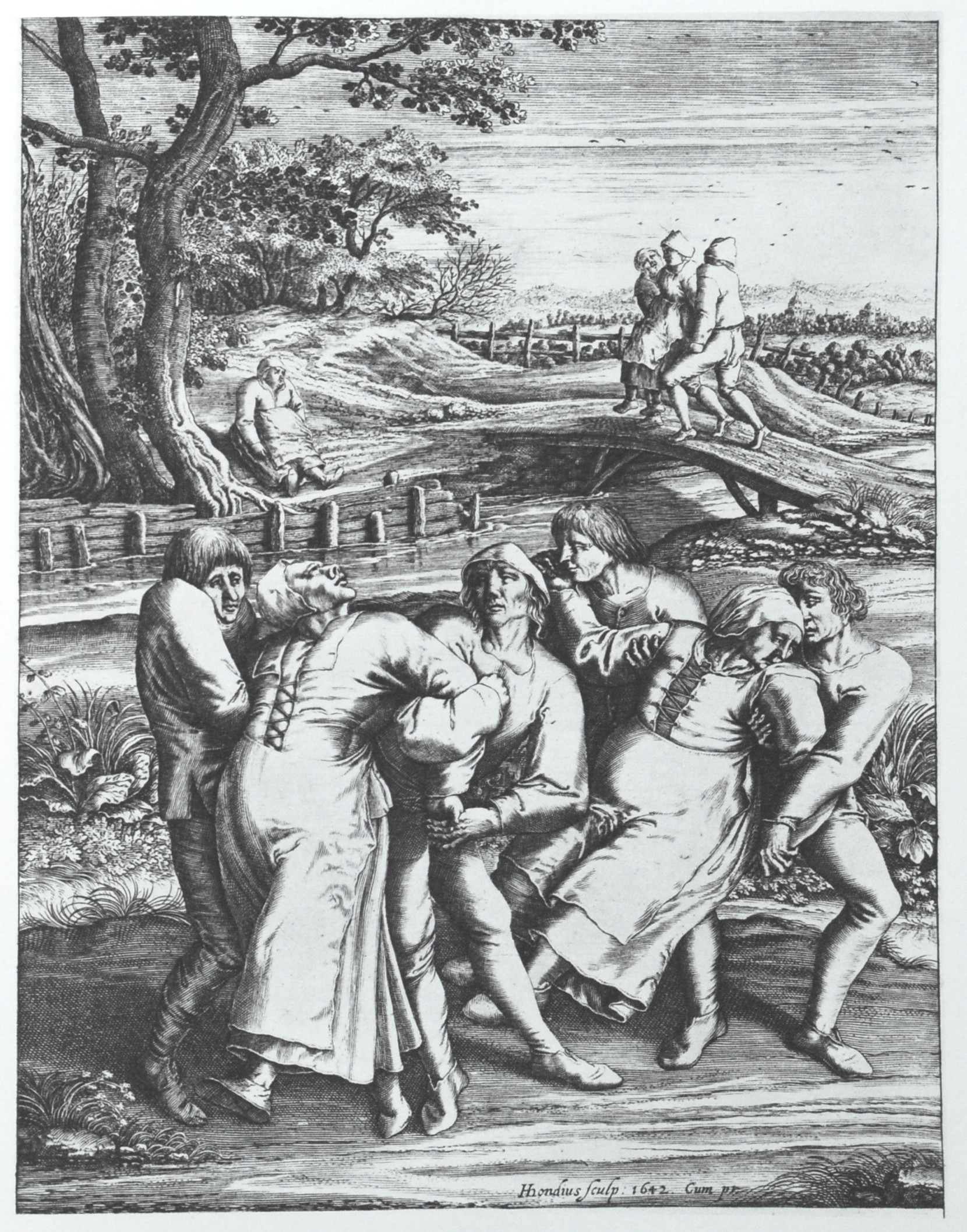In the scorching summer of 1518, a peculiar event unfolded in the streets of Strasbourg that would perplex historians for centuries to come. One woman, known as Frau Troffea, stepped into the streets and began dancing uncontrollably. Little did anyone know this would trigger one of history’s most bizarre epidemics.

Image credit: History.com
What started as a solo performance quickly evolved into a terrifying spectacle. Within days, thirty other townspeople joined this inexplicable dance marathon. By August, the dancing fever had gripped nearly 400 people! The dancers moved frantically day and night, their bodies refusing to stop despite exhaustion and injuries.

Image credit: Wikipedia
The medieval townspeople, driven by superstition, believed St. Vitus had cursed them with this dancing plague. However, modern historians paint a different picture. They suggest this mass hysteria emerged from a perfect storm of widespread stress, severe hunger, and rampant disease that plagued the region.
Scientists have proposed various theories to explain this mysterious phenomenon. One intriguing explanation points to ergot poisoning from contaminated rye. This fungal infection could cause hallucinations and uncontrollable spasmodic movements, potentially explaining the bizarre behavior of the affected individuals.
The dancing plague of 1518 remains a fascinating example of mass hysteria in human history. It shows how psychological distress can manifest in extraordinary ways when combined with social and environmental pressures. The event lasted from July to September, leaving behind a legacy that continues to captivate minds and spark discussions about the power of mass psychological phenomena.
Perhaps most remarkably, this wasn’t the only dancing plague in history, though it was certainly the most well documented. The incident serves as a stark reminder of how collective human behavior can spiral into unexpected and dangerous manifestations. Even today, experts continue to study this event to better understand mass psychological responses to extreme stress and social pressure.
References:
History.com – What Was the Dancing Plague of 1518? – link
Wikipedia – Dancing plague of 1518 – link
Categories: Do you know, Historical Mysteries, Mass Hysteria, Medieval History, Unexplained Phenomena
Tags: Dancing Plague, ergot poisoning, Historical Mysteries, Mass Hysteria, Medieval History, St. Vitus dance, Strasbourg, unexplained phenomena
Religion: Christianity
Country of Origin: France
Topic: Historical Mystery
Ethnicity: European


